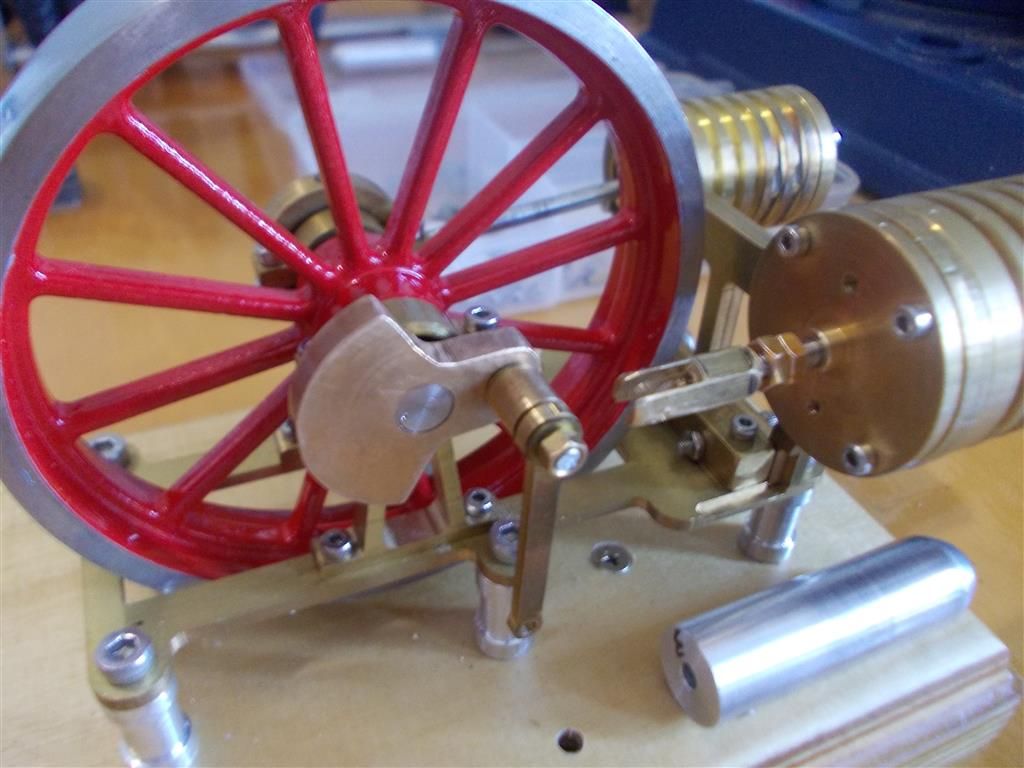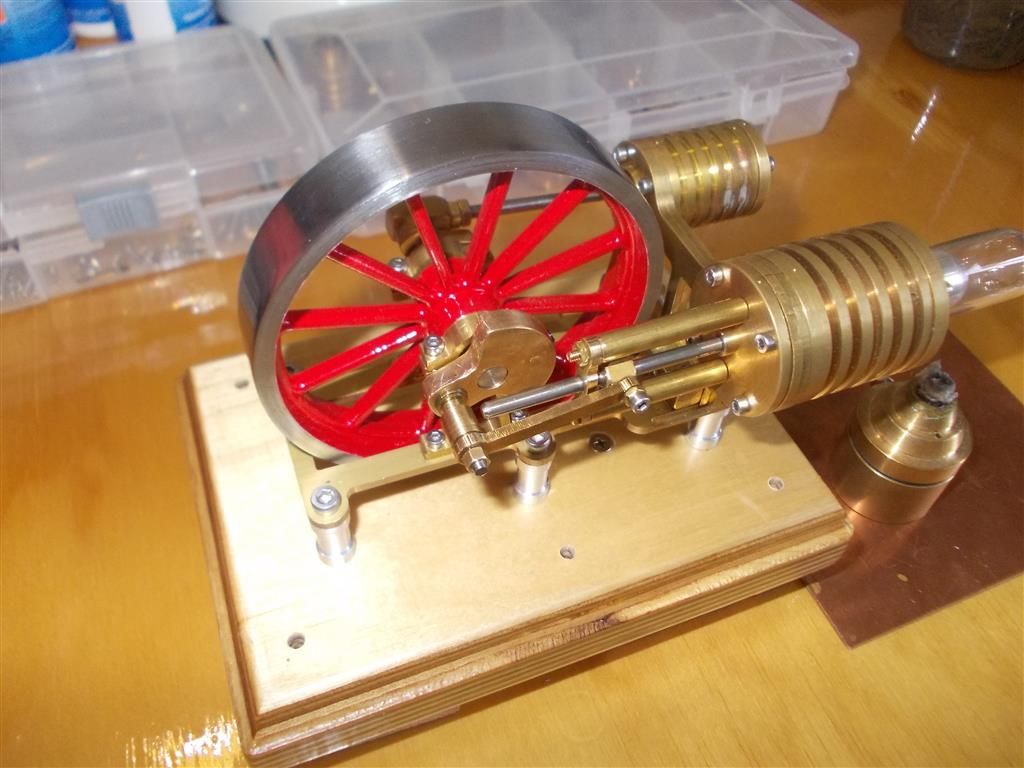Very frustrating : I have pulled everything apart, polished many parts with 2000 grit wet and dry and then reassembled the engine with only one con rod. I have oiled all moving parts despite the advice to the contrary as I am running out of options. I am not happy with the supplied bearings but the replacements bearings have not arrived from Hong Kong yet so I will have to stick with what I have.
Things are running much better now. I am getting 8 revolutions when spinning it by hand with everything connected (one con rod on the D Piston). When the burner is applied I am getting about 16 revolutions. I am sure it is not my imagination  It really wants to run but something is stopping it. Possible solutions are :
It really wants to run but something is stopping it. Possible solutions are :
1. It is very hot here today, especially inside the house (about 40 degrees C). The work cylinder gets hot very quickly ; there cannot be too much of a temperature difference between the two cylinders. I might try again later tonight when the air con is on.
2. The supplied bearings are not up to scratch. You might remember that I have put shims between the bearing supports and the covers to stop the bearings being crushed out of shape. It could be that before I inserted the shims that I damaged these bearings when tightening things up the first time. Nothing to do here but wait for the new ones to arrive.

Edited By Brian John on 17/02/2016 06:58:05
Edited By Brian John on 17/02/2016 07:00:42
Edited By Brian John on 17/02/2016 07:10:33
Gordon Tarling.



 It really wants to run but something is stopping it. Possible solutions are :
It really wants to run but something is stopping it. Possible solutions are :


